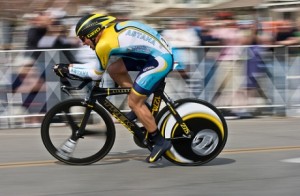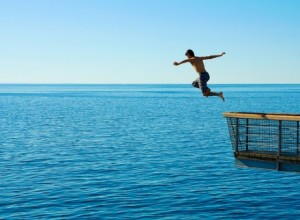With Texas temperatures regularly reaching triple digits, there’s no shortage of articles written about exercising in the heat. There are some highly respected exercise physiologists and coaches who have researched and given excellent explanations about what happens to the exercising body when mercury rises.
The bottom line is simple: you cannot exercise as vigorously in hot temperatures as you can in cooler temperatures. Conversely, if a rider performs at a given power output (i.e. workload) on a bike, and intensity measurements are taken, such as a rating of perceived exertion (RPE) or heart rate, both would be higher in hotter climes compared to cold.
For day-to-day training, conventional wisdom says that since heart rate increases as the temperature rises for the same power output, heart rate is a less valuable indicator of exercise intensity, since the muscles aren’t undergoing the same workload as they were in colder weather.
This is absolutely great exercise physiology, but doesn’t take into account the full spectrum of just plain old physiology. Our bodies are complete systems. Just because our muscles aren’t working very hard doesn’t mean that the rest of the body is on vacation.
One reason heart rate increases in the heat is because more blood is shunted from exercising muscle to the skin for cooling. Doing so requires a higher heart rate to maintain the same level of circulation to the tissues.
In addition, we tend to get dehydrated faster in hotter weather, which actually reduces our blood volume. This reduced volume also instigates a higher heart rate to circulate nutrients and remove waste. These factors alone place more stress on your kidneys, liver, brain, adrenal glands, and the heart itself.
This stress on your entire body is the reason you can do a moderate workout in 70 degree weather and feel great, yet do the same workout at 95 degrees and feel like you got up close and personal with the underside of an 18-wheeled vehicle. In other words, the workout in hotter weather feels harder because it IS harder.
Bodies like to burn an increasing percentage of sugars (compared to fat) in the heat, and this happens because different metabolic pathways are set in motion. This should tell us that we actually train our energy systems to varying degrees — and the metabolic pathways that go along with them, when we turn up the thermostat.
Basically, for a given workload, we don’t train the same muscles in the heat that we do in the cold. If you’re at all diligent about planning your training and being mindful of what kind of intensity you apply, and when–this should concern you.
The vast majority of endurance sports’ world records are set in cooler temperatures. Somewhere in the mid 50s Fahrenheit seems to be the magic temperature. We can’t subscribe to the idea that cooler temperatures make it easier to perform better without also agreeing that hotter weather will make it harder.
There are many who believe that given what we know about how heart rate increases in the heat, it should be less relevant or even ignored under those conditions. It should actually become more important given its usefulness as an indicator of systemic stress on the body. Unfortunately for our egos, this means that as the mercury rises we’ll have to slow down in order to train effectively.
A power meter is a great measurement of exercise intensity and a fantastic training tool, especially at levels of exertion above the anaerobic threshold, where heart rate data is truly less reliable. Used together, simultaneous heart rate and power measurements can show true gains or losses of fitness by pegging a relatively concrete indicator of workload (i.e. power) to a much more reliable indicator of intensity than perceived exertion (i.e. heart rate).
We shouldn’t ignore basic warning signs just because we have data that shows one particular area of our bodies isn’t working to the same extent in the heat. Your perceived exertion and your heart rate go up in hotter temperatures for a reason. Your body is trying to send you a message. Listen to it.



